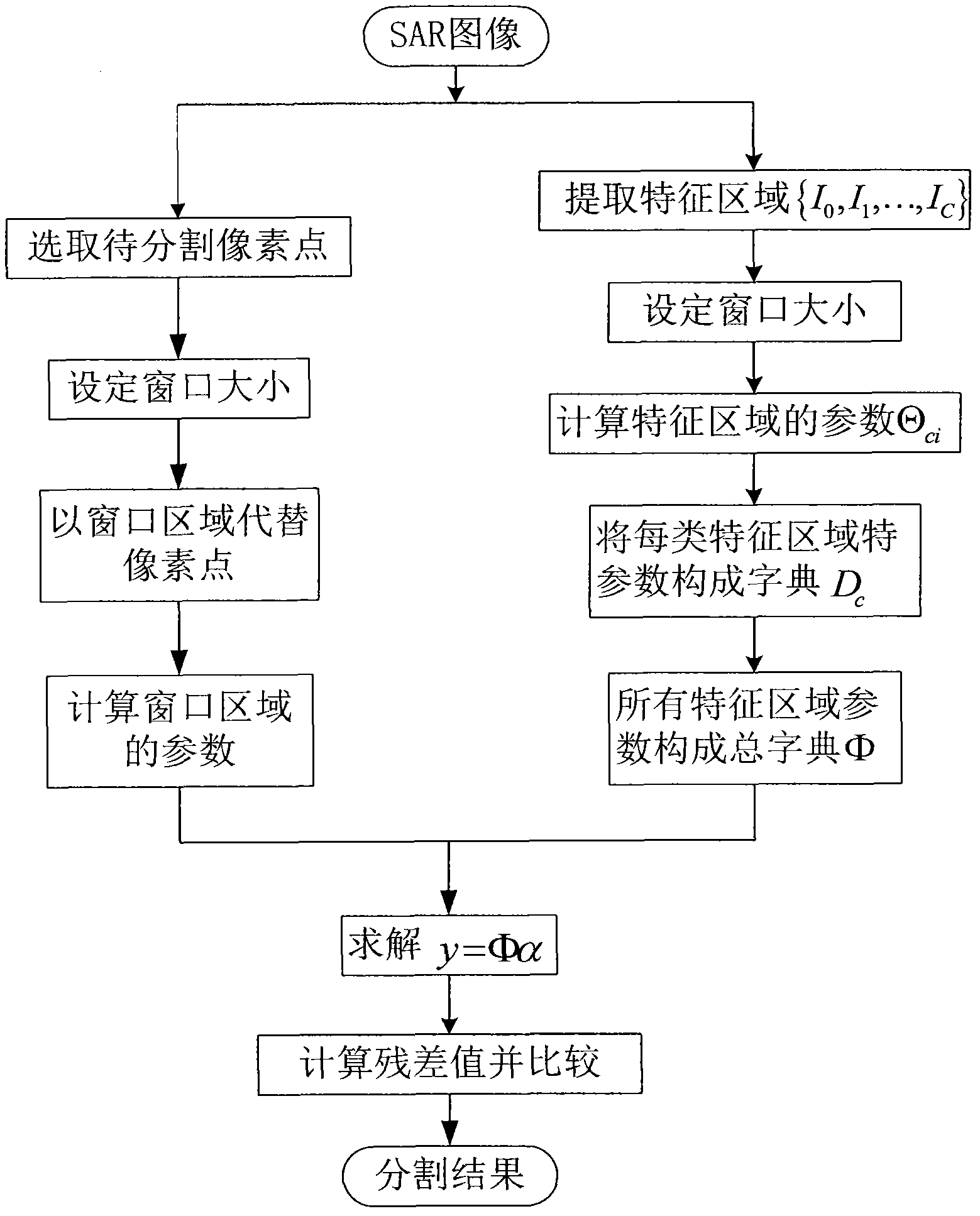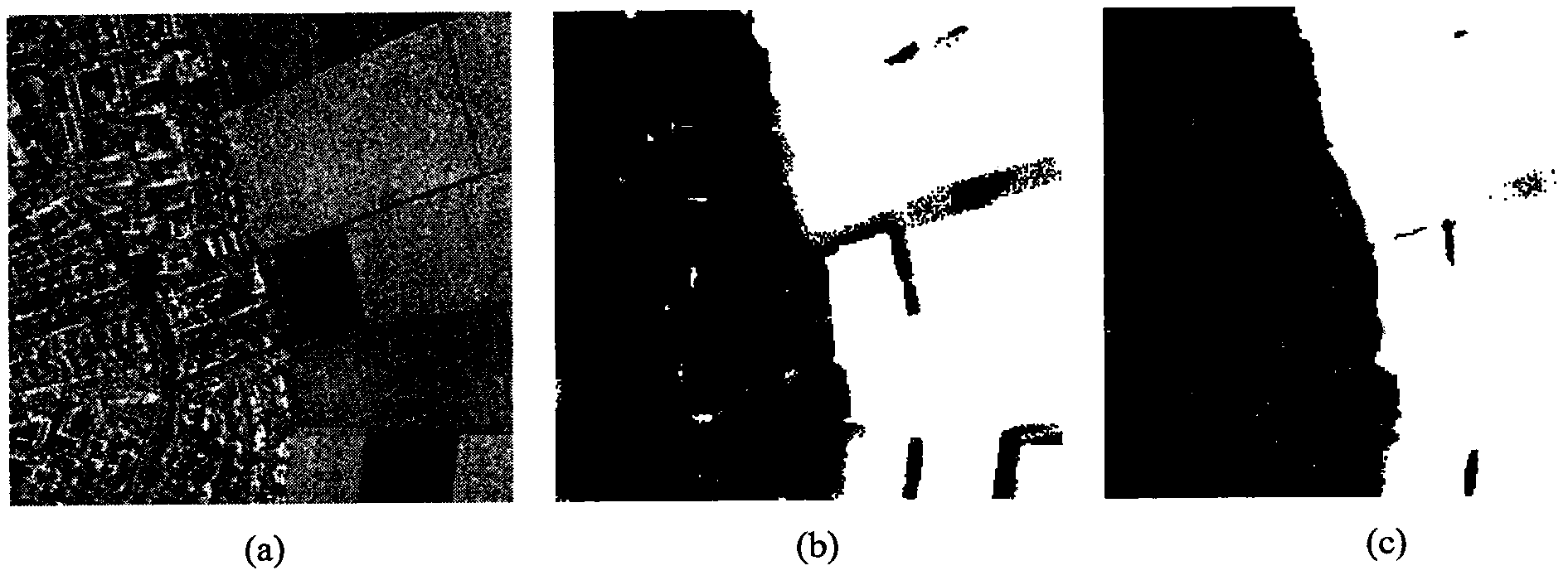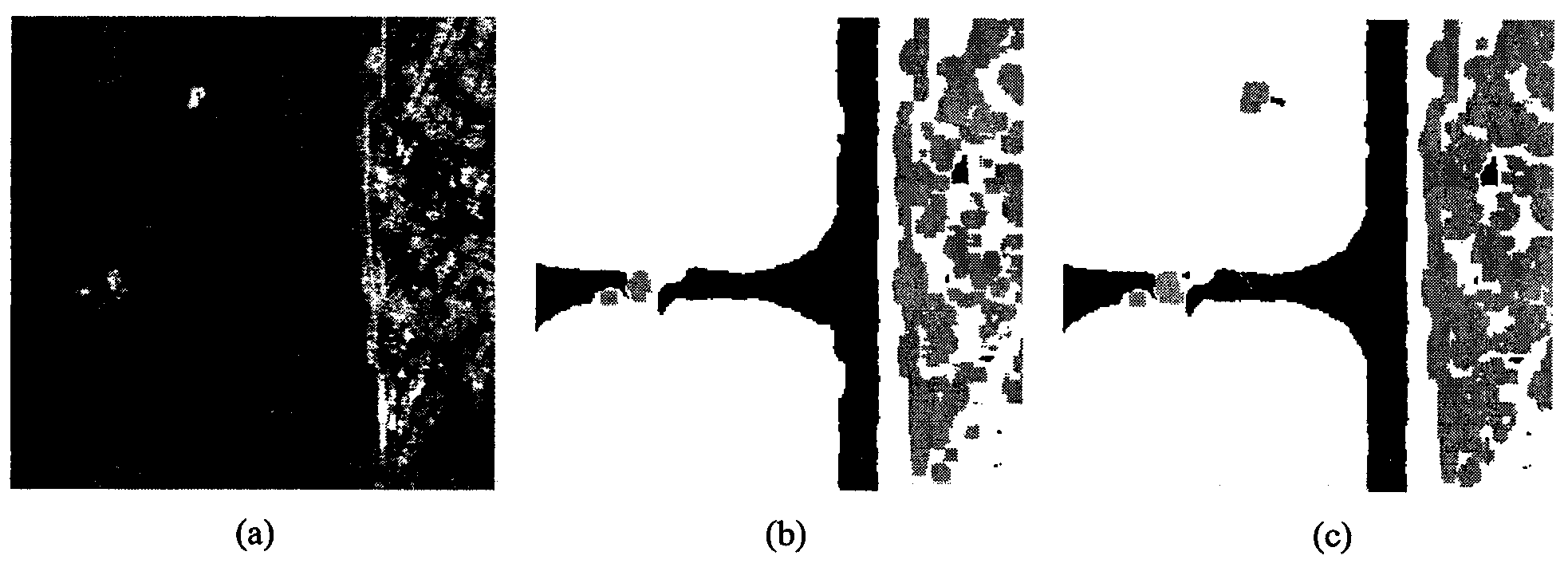K distribution and texture feature-based SAR (Synthetic Aperture Radar) image segmentation method
An image segmentation and texture feature technology, applied in the field of image processing, can solve the problems of insufficient mining of SAR image global features and local texture features, difficulty in non-causal Markov estimation, incomplete boundary and edge direction information, etc., to achieve clear edges Complete details, high accuracy of segmentation results, and stable results
- Summary
- Abstract
- Description
- Claims
- Application Information
AI Technical Summary
Problems solved by technology
Method used
Image
Examples
Embodiment Construction
[0030] Reference figure 1 The specific implementation steps of the present invention are as follows:
[0031] Step 1. Select the training sample area for the SAR image of the ground object to be segmented {I 0 , I 1 ,..., I C }.
[0032] Select pixel regions with obvious texture features in the SAR image to be segmented, and mark these training sample regions as {I 0 , I 1 ,..., I C }.
[0033] Step 2: For the selected training sample area I c Perform feature extraction to obtain the feature parameter dictionary D of the c-th training sample region c =[Θ 1 , Θ 2 ,..., Θ 100 ], where Θ i ={l, m, u, me, st, asm, con, idm}, 1≤i≤100, c∈C, m and μ are the three parameters of the probability density function of the K distribution model, me means the mean, st Represents the variance, asm, con, and idm represent the energy, contrast, and correlation of the gray-level co-occurrence matrix, respectively.
[0034] The specific process to achieve this step is as follows:
[0035] (2a) In the trai...
PUM
 Login to View More
Login to View More Abstract
Description
Claims
Application Information
 Login to View More
Login to View More - R&D
- Intellectual Property
- Life Sciences
- Materials
- Tech Scout
- Unparalleled Data Quality
- Higher Quality Content
- 60% Fewer Hallucinations
Browse by: Latest US Patents, China's latest patents, Technical Efficacy Thesaurus, Application Domain, Technology Topic, Popular Technical Reports.
© 2025 PatSnap. All rights reserved.Legal|Privacy policy|Modern Slavery Act Transparency Statement|Sitemap|About US| Contact US: help@patsnap.com



